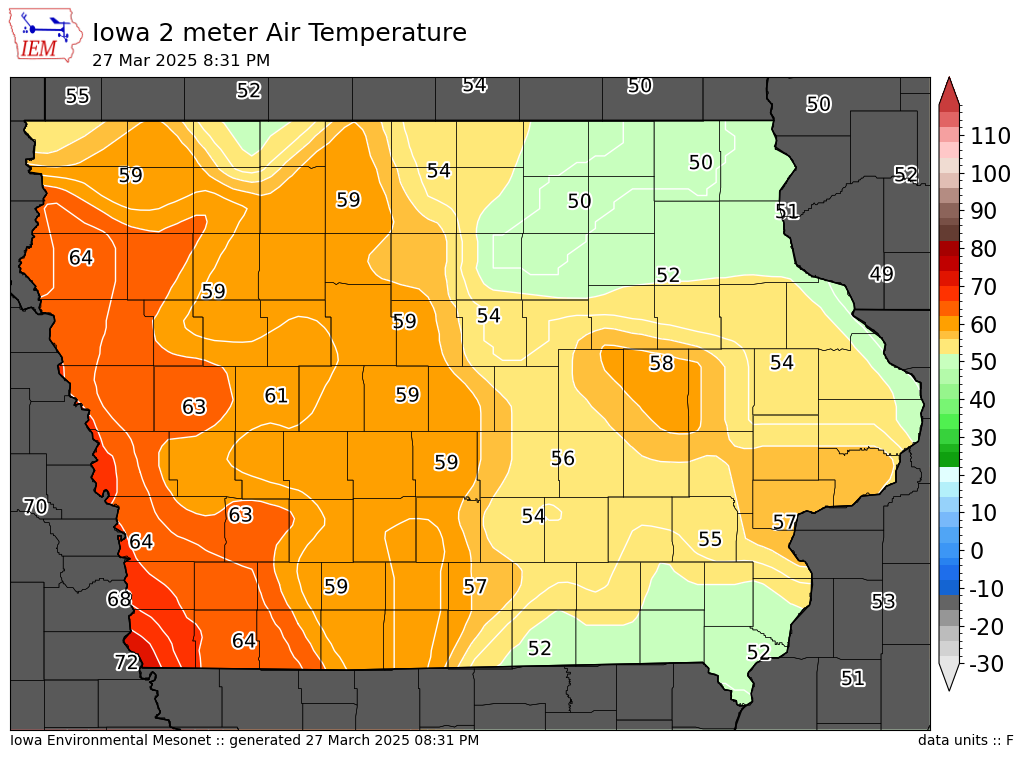 |
Current Conditions Staying Safe |
|
Current Watches, Warnings, and Advisories |
|
A Heat Advisory means that temperatures of at least 100°F* or Heat Index values of at least 105°F* are expected generally within the next 24 hours. Consider postponing or rescheduling any strenuous outdoor activities. If you must be outside, be sure to drink plenty of water and take frequent breaks in the shade. The young and elderly and those with medical conditions should use extra caution outdoors. An Extreme Heat Watch means that Heat Index values are expected to reach or exceed 110°F* and not fall below 75°F* for at least a 48 hour period, beginning in the next 12 to 48 hours. Plan to suspend all major daytime outdoor activities if a warning is issued. If you do not have air conditioning, locate the nearest cooling shelter or discuss staying with nearby family or friends who have A/C. An Extreme Heat Warning means that Heat Index values are expected to reach or exceed 110°F* and not fall below 75°F* for at least a 48 hour period, beginning in the next 24 hours. Refrain from outdoor activities of any nature during the warmest time of the day. Drink plenty of water and take frequent breaks if you must be outside. Stay indoors in an air conditioned building as much as possible. Check on elderly family members if they are living alone. *The criteria listed above may be deviated from occasionally depending on the impacts to the public. For example: a heat product may be issued for lower temperatures or Heat Index values early in the season. |
 |
 |
| Current Heat Index Readings | Current Temperatures |
| Maps Courtesy of the Iowa Environmental Mesonet | |
Heat is the #1 weather-related killer in the United States! Here are a few tips on staying safe during episodes of dangerously hot weather:
For more information, check the National Weather Service's Heat Safety page.
What is the Heat Index?
The Heat Index (HI) is sometimes referred to as the "apparent temperature" and is a measure of how hot it feels outside to the human body. The HI includes the influence of both the actual air temperature and relative humidity. As either value increases, the apparent temperature also increases. The reason why the apparent temperature increases with relative humidity is due to how the body cools itself. The body dissipates almost 90% of its heat through skin perspiration (sweat). Sweating by itself does nothing to cool the body unless the water is removed by evaporation--and high relative humidity hinders evaporation.
To figure out the HI, reference the Heat Index Chart below and find the intersection of the air temperature and relative humidity. The shaded zones on the chart correspond to the probabilities of developing heat-related disorders. It is important to note that the HI values were devised for shady, light wind conditions, thus, exposure to full sunshine can increase HI values by up to 15 degrees.
Heat disorders are generally a result of the body's inability to shed excess heat by sweating or a chemical (salt) imbalance caused by too much sweating. When heat gain exceeds the level the body can remove, or when the body cannot compensate for fluids and salt lost through perspiration, the temperature of the body's inner core begins to rise and heat-related illness may develop. The table below on the right explains the risk to the body from continued exposure to excessive heat and is color coded to match the HI chart.
For more information on how heat affects the body, see the National Weather Service's Heat Safety webpage.